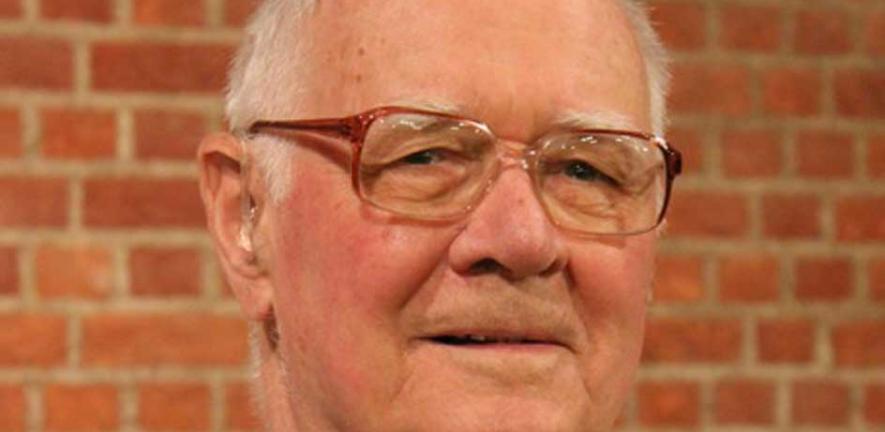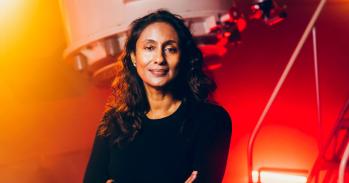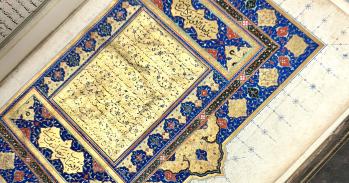
Eminent thinker and commentator Revd Dr John Polkinghorne, Fellow of the Royal Society, will be giving a public talk – titled A Destiny Beyond Death - tomorrow lunchtime at St Edmund’s College, Cambridge. It is part of a series organised by the Faraday Institute for Science and Religion. Here he gives an overview of his understanding of the relationship between what are generally considered to be two opposing schools of thought.
Eminent thinker and commentator Revd Dr John Polkinghorne, Fellow of the Royal Society, will be giving a public talk – titled A Destiny Beyond Death - tomorrow lunchtime at St Edmund’s College, Cambridge. It is part of a series organised by the Faraday Institute for Science and Religion. Here he gives an overview of his understanding of the relationship between what are generally considered to be two opposing schools of thought.
The gift that religion has to offer to science is not to answer its questions but to take science’s insights and set them within a broader and deeper context of intelligibility.
Revd Dr John Polkinghorne
Science and religion are two of the most powerful influences in contemporary society. Some see them as competing alternatives but, as someone who is both a former Cambridge science professor and an Anglican priest, I want to take them with equal seriousness. I am proud that Cambridge was the first university in the UK to endow a post in theology and science: the Starbridge Lectureship is held by Dr Fraser Watts.
The possibility of fruitful interaction between science and religion arises from the fact that both are concerned with the search for truthful understanding, to be attained through motivated beliefs. Of course, this is a philosophically contested claim, but my scientific experience encourages me to adopt the stance of ‘critical realism’ in relation for the insights of both science and religion. The term ‘realism’ signifies the belief that we can gain actual insight into the nature of reality, while the description ‘critical’ signals that this knowledge is never complete or absolutely certain, though sufficiently well supported by evidence to make commitment to it a rational act.
Science and religion look at different domains of encounter with reality. Sciences deals with an objective dimension, in which things can be manipulated and events repeated, thereby affording it access to the great weapon of experimental verifiability. Yet we all know that there are many levels of encounter with reality – both personal and, I would say, the transpersonal encounter with divine reality – in which neither manipulation nor repetition are possible without doing violence to the reality encountered. We never hear a Beethoven quartet the same way twice, even if we replay the same recording. In this personal realm, testing has to give way to something like trusting.
The difference in domains means that science and religion ask different questions of reality: in the former case how things happen; in the latter whether there is meaning, purpose and value in what is happening – issues that science tends to rule out of its discourse. Science and religion, therefore, complement each other, rather than being rivals on the same turf. For full understanding, we need both sets of insights. To take a homely example, the kettle is boiling because gas heats the water (process) and because I want to make a cup of tea (purpose). Some people have argued that these differences are so completely separate that they have nothing to say to each other, but I believe that this view is mistaken. Their questions are different but the answers given must be mutually compatible. Returning to the homely example, putting the kettle in the refrigerator would cast doubt on my intention to make a cup of tea.
The common quest for truth makes science and religion friends and not foes, with gifts to offer each other. Science can tell religion what the nature and history of the universe is actually like, a gift to be received with gratitude as theology seeks to understand the cosmos as a divine creation. It makes me sad to see some religious people refusing to take seriously the truth that science has to offer. The gift that religion has to offer to science is not to answer its questions - for we have every reason to expect that scientific questions will receive scientific answers – but to take science’s insights and set them within a broader and deeper context of intelligibility.
The metaquestions that arise from the experience of doing science take us beyond science’s ability to answer. One example must suffice: ‘Why is science possible at all in the deep way that ir has proved to be?’ Of course, evolutionary process must have shaped human brains so that we can understand the everyday world in which our ancestors had to survive. But why are we also able to understand the cloudy and fitful world of quantum physics, which appears so far removed from the everyday world? Why is it that mathematics – the most abstract of disciplines – which furnishes the key to unlock the deep secrets of the physical world?
It is an actual technique of discovery in fundamental phyics to seek theories which are expressed in terms of what mathematicians can recognise and agree to be beautiful equations. This strategy is no act of aesthetic indulgence, for time and again it has proved to be the case that it is just such theories that provide the long-term fruitfulness of explanation which persuades us that they describe the way the physical world is. The universe has proved to be astonishingly rationally transparent and rationally beautiful. Is this just a random piece of luck or is it a fact of great significance? Science exploits this fact, but is unable to explain it,
I have been describing a world which in its deep intelligibility could fittingly be described as shot through with signs of mind. I believe that it is wholly reasonable to believe that it is the divine Mind of the Creator that lies behind the wonderful order of the cosmos. I like to say that I am ‘two-eyed’, viewing the world through the view of science and religion, a binocular vision that enables me to see further and deeper than I would with just a single eye. I need to take science and religion with an equal seriousness.
The talk A Destiny Beyond Death takes place at 1pm tomorrow in The Garden Room, St Edmund's College, Cambridge (sandwiches from 12.30pm). Free and open to all.
This work is licensed under a Creative Commons Licence. If you use this content on your site please link back to this page.





